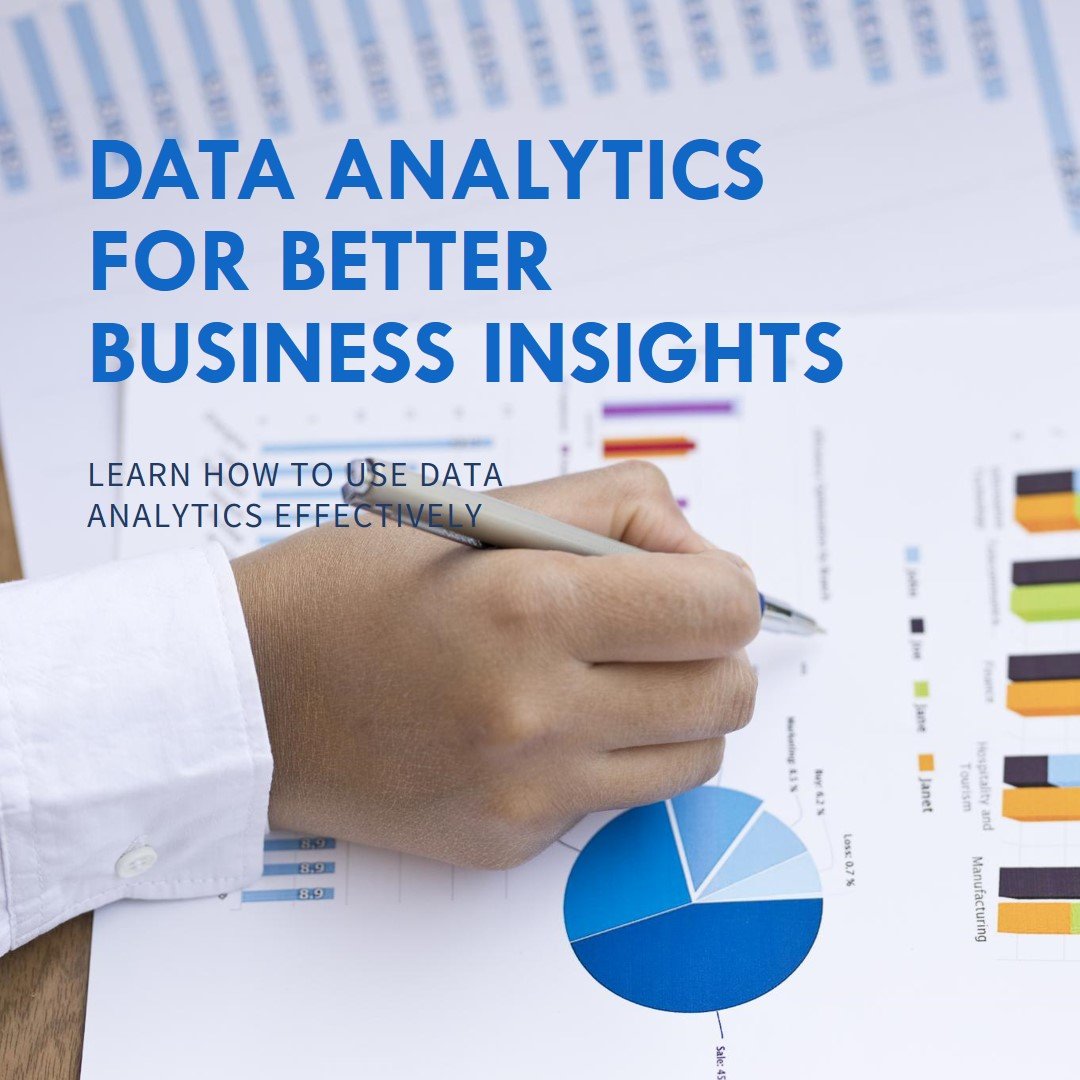In an era where data is mostly described as the new oil, businesses of various sizes are rushing to join the power of data analytics to get a competitive edge. The journey from raw data to actionable insights is complex. It needs a strategic approach supported by a solid understanding of tools and techniques at your disposal.
The Importance of Data
Data analytics enables businesses to make more informed decisions, refine processes, and achieve better results by extracting meaningful insights from the collected data. These insights are helpful when it comes to understanding customer behavior, optimizing operations, anticipating market trends, and innovating product offerings. However, to begin, a business first needs to ensure it is collecting the apt data and the data is high quality.
Step-by-Step Process to Utilize Data Analytics
- Define Your Goals: You need to define clearly what you want to achieve before jumping into data. Whether it is for improving customer satisfaction, reducing operational costs, or identifying new opportunities in the market, your objects will guide the data types that you collect and the analytical approaches that are used.
- Collect Quality Data: Gathering data of high quality is important. This involves collecting the right data as well as ensuring it is representative of the broader conditions under which your business operates.
- Pick the Right Tools: Utilize analytical tools that can handle your data’s complexity. From Python for data manipulation and machine learning to simpler visualization tools like Tableau or Google Charts, the right tools can make a significant difference in how you interpret data.
- Analyze and Interpret Data: Statistical analysis, data mining, or machine learning techniques should be applied to discover patterns or insights. This step often involves rigorous testing and validation to ensure the findings are robust and reliable.
- Visualize Insights: Data visualization is a powerful way to communicate complex data in a straightforward, digestible manner. Tools and techniques in visualization can reveal hidden trends and make the insights clear to stakeholders who might not be tech-savvy.
- Turn Insights into Action: The final goal of data analytics is not just gathering insights but also using them to make informed decisions. This needs understanding the data and being able to translate these insights into actionable strategies that drive business improvement.
You May Also Like: Top Conversion Rate Optimization Techniques to Boost Sales
Advanced Analytical Techniques

To elevate the analytical process, businesses can implement advanced techniques like predictive analytics and prescriptive analytics. Predictive analytics uses historical data to forecast future outcomes, providing businesses with the capability to anticipate events, customer behaviors, and market trends. This foresight enables proactive strategy adjustments, enhancing agility and competitive advantage.
Prescriptive analytics goes a step further by predicting outcomes and suggesting actions to achieve desired results. This technique involves complex algorithms and machine learning models that help businesses make data-informed decisions to optimize operational efficiencies and drive strategic initiatives.
Incorporating Artificial Intelligence
The integration of Artificial Intelligence (AI) in data analytics is revolutionizing business strategies and taking them to the next level. AI can automate complex data processes, uncover patterns and insights at unprecedented speeds, and handle huge quantities of data beyond human capability. For example, AI algorithms can improve customer service by analyzing customer feedback and interactions to predict customer needs and personalize responses.
Cultivating a Data-Driven Culture
Fostering a data-driven culture is essential for organizations that aim to leverage data analytics effectively. This involves training employees across all levels to understand and use data in their decision-making processes. Leadership must champion data-driven practices by setting an example and providing the necessary tools and training to their teams. Encouraging open communication about data discoveries and their impact on strategies and operations can help in cultivating an environment where data is valued as a critical asset.
Continuous Learning and Adaptation
Data analytics is a rapidly evolving field. Staying updated with the latest tools, trends, and methodologies is crucial. Organizations should invest in continuous learning opportunities for their staff, such as workshops, seminars, and courses in data science and analytics. This certainly enhances the skills of their workforce and also ensures that the company remains at the cutting edge of technology and best practices in data utilization.
Ethical Considerations in Data Usage
As data becomes a pivotal element of business strategies, ethical considerations must be addressed. Organizations need to ensure they use data responsibly. This involves securing personal data, ensuring privacy, and maintaining transparency with customers about how their data is used. Ethical use of data not only complies with regulations like GDPR but also builds trust with customers and stakeholders, which is invaluable for long-term business relationships.
Evaluating and Scaling Data Initiatives
To maximize the impact of data analytics, businesses must continually evaluate the effectiveness of their data initiatives. This includes setting measurable goals and using metrics to assess the success of data-driven strategies. Insights gained from these evaluations can guide businesses in scaling their data analytics practices effectively, ensuring resources are allocated efficiently and aligned with business objectives.
Overcoming Challenges in Data Analytics
Many organizations face challenges in transforming data into insights. These challenges can stem from a lack of skilled personnel, and inadequate technological infrastructure within the organization. Overcoming these challenges often requires a commitment to ongoing education and investment in technology, as well as fostering a culture that values data-driven decision-making.
You May Also Like: Top 7 Content Marketing Mistakes to Avoid
Real-World Applications and Success Stories
Companies like Netflix and Walmart have leveraged data analytics to great effect. Netflix uses data to tailor its offerings to user preferences, leading to high customer retention rates, while Walmart analyzes consumer data to optimize inventory and improve customer satisfaction.
The Path Forward
The future of business is indisputably tied to the ability to analyze data effectively. As businesses become more complex and the amount of data available increases, the need for sophisticated data analytics capabilities will only grow. Companies that can quickly adapt to these demands and integrate data analytics into their strategic planning will find themselves at the forefront of their industries.
Bottom line!
Using data analytics to drive business insights is an iterative and strategic process that involves much more than just collecting and analyzing data. It requires a holistic approach that includes setting clear goals, using the right tools, and continually refining techniques as business needs evolve. By following these steps, businesses can maximize their data use to survive and thrive in today’s data-driven world.






